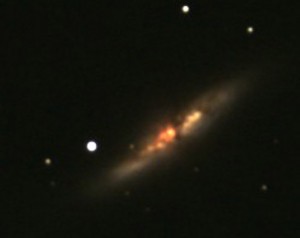I currently use an Atik Infinity Color CCD for lazy astrophotograpy and an Atik 383L+ SW CDD guided by a Starlight Lodestar X2. For DSLR is my APS size chip Canon 60Da and to a lesser degree my full size chip 5D used. Also used are filters and a complement of extensions, reducer barlows, to obtain the desired Field of View on the camera CCDs. I owened Starlight Xpress MX716 CCD which is a fine CCD and still has good support for its drivers.
My sky’s are light polluted almost qualifying as white zone. One way to bypass light pollution is a monochrome camera Atik 383L+ and narrowband imaging. I highly recommend mono and good Baader narrowband filters together with an automated filter wheel.
- DSLR Camera Control
- Software-Assisted Focusing
- Image Acquisition Automation
- Image Calibration, Aligning and Stacking
- Image Correction and Enhancement
- Autoguiding Software
- Photo Utilities
- Photoshop Filters and Actions
- Tutorials on Image Processing of Astrophotos
- Planetarium Programs and Atlases
DSLR Camera Control
With camera control software, you can use your computer to control all of the functions and settings of your camera, such as setting the ISO and opening the shutter.
Backyard EOS Software by the camera manufacturer will control all functions of the camera. This is accomplished through a single USB-2 Cable and includes control of the bulb setting for exposures longer than 30 seconds. This software also allows viewing of the Live-view real-time image on the computer and focusing.
Software-Assisted Focusing
The latest generation DSLR cameras allow focusing through the camera manufacturer’s software. This can be done by manual focusing and visual inspection of the Live-view image on the computer.
For previous generation cameras without Live-View, an image had to be downloaded to the computer and then visually examined for focus accuracy. Programs such as Backyard EOS could also download an image and then examine a star and give a readout of the star’s diameter or brightness. This metric-assisted focusing was objective and did not rely on any visual interpretation to determine focus.
The latest camera manufacturer’s software can make focusing very easy with Live-view, however, this software does not provide any type of metric-assisted focusing.
Image Acquisition Automation
Serious deep-sky astrophotography requires shooting many short exposures. This can be done manually, but it is very tedious. For example, faint deep-sky objects may require several hours worth of 5 minute exposures that are later stacked or combined in subsequent image processing.
Software such can automate this process. But than you are with an laptop in the field. Sometimes I use either a simple timer.
Image Calibration, Aligning and Stacking
Advanced astronomical imaging requires the “calibration” of the raw original images. Calibration means removing unwanted fixed signals (such as thermal current and bias), and correction for signal modifications (such as vignetting) so that the raw image accurately represents the intensity of light incident on the sensor during the exposure.
To calibrate your original raw astronomical images, you will require some type of special astronomical image processing software, such as Images Plus, MaxDSLR, AIP (Astronomical Image Processing), AstroArt, IRIS, Deepsky Stacker or Regim. Mostly I use Pixinsight.
Whatever software you use for image calibration will almost certainly also do aligning and image stacking. It is possible to align and stack images in Photoshop, but for more than a couple of frames, the process is extremely tedious and not as accurate as with a dedicated astronomical image processing program. This can speed up by so-called Action, but I have only the recent Photoshop Elements.
Image Correction and Enhancement
Once your images are calibrated, aligned and stacked, you will want to correct for things such as color balance, and increase the contrast to make faint details more visible. You will probably also want to apply some type of noise reduction, and you may want to apply more sophisticated enhancement techniques.
However, at this stage of image processing, I prefer to switch to a astronomyl image processing program such as Üixinsight.
Autoguiding Software
For long-exposure deep-sky astrophotography, guiding during the exposure can be very useful in producing higher quality images. By manually or automatically following a star by making corrections in right ascension and declination higher tracking accuracy is obtained.
Autoguiding involves using a separate CCD or Webcam to monitor a stars position and then send corrections to the telescope’s mounting to guide or follow the star with high accuracy to compensate for inaccuracies in the mount’s tracking.
CCD cameras and webcams can be also be used as autoguiders, but software is required to run on a computer that interfaces between the autoguider and mount. I use the Gold Standard: PHD2 a telescope guiding software that simplifies the process of tracking a guide star.
Photo Utilities
These programs perform useful functions like allowing you to open FITS format files, perform noise reduction, and create thumbnails for indexing and archiving.
Photoshop Filters and Actions
These filters and actions work inside of Photoshop and perform specialty functions for astronomy, such as gradient and noise reduction.
Tutorials on Image Processing of Astrophotos
Tutorials in book and video format teach you how to do astrophotography, and use programs such for image calibration and Photoshop for image correction and enhancement. I have a good one unfortunately I have to translate from Photoshop CS to PSE (Elements) which cannot record actions
Planetarium Programs and Atlases
Planetarium programs and atlases let you find out what is up in the sky, and plan your observing and astrophotography session.
Astronomical Software For the PC
|
Low Budget Software
|
Hopefully some of these links will be useful for those of us who get involved in the (often) complex task of DSO image processing. There are bound to be other very useful resources out there on the web which I’ve not included in this post.
CLEAR SKIES!!

